#SDCC: Semi-liveblogging the Eisner Awards
 The 21st annual Eisner Awards, the “Oscars” of the comics industry, will be given out at a gala ceremony at a brand-new location: the Indigo Ballroom at the Hilton Bayfront. This year’s special them is “Comics and All That Jazz.” Scheduled presenters include writer/actors Thomas Lennon and Robert Ben Garant (Reno 911, Balls of Fury), acclaimed comics creators Jeff Smith and Terry Moore, actor/comedian Patton Oswalt, actor/musician/writer Bill Mumy, actress/musician Jane Wiedlin, and G4’s Blair Butler, with many more to be announced.
The 21st annual Eisner Awards, the “Oscars” of the comics industry, will be given out at a gala ceremony at a brand-new location: the Indigo Ballroom at the Hilton Bayfront. This year’s special them is “Comics and All That Jazz.” Scheduled presenters include writer/actors Thomas Lennon and Robert Ben Garant (Reno 911, Balls of Fury), acclaimed comics creators Jeff Smith and Terry Moore, actor/comedian Patton Oswalt, actor/musician/writer Bill Mumy, actress/musician Jane Wiedlin, and G4’s Blair Butler, with many more to be announced.
Other prestigious awards to be given out include the Russ Manning Promising Newcomer Award, the Bob Clampett Humanitarian Award, and the Bill Finger Award for Excellence in Comic Book Writing. The master of ceremonies is Bongo Comics’ Bill Morrison.
We’re going to cover it as best as we can here… boldfacing the winners as they are announced.
8:46: Neil Gaiman tweets: “on my way to present eisner award. Car just pulled over for illegal left turn. Will we make it?”
9:03: Heidi MacDonald tweets: “No phone coverage in Indigo Ballroom so NO live Twitter Eisner Awards. #techfail”
Hmm. This will make life challenging. Time to get a goat to sacrifice…
9:12: Neil made it.
9:14: First winner of the night: Best Publication For Kids: Tiny Titans, by Art Baltazar and Franco (DC)
9:16: Best Publication for Teens/Tweens: Coraline.
9:28: Robot6 enters the liveblogging! And they report:
Best Coloring: Dave Stewart, Abe Sapien: The Drowning, BPRD, The Goon, Hellboy, Solomon Kane, The Umbrella Academy (Dark Horse)
Best Lettering: Chris Ware, Acme Novelty Library #19 (Acme)
Best webcomic: Finder, by Carla Speed McNeil
9:45: Best Penciller/Inker or Penciller/Inker Team: Guy Davis, BPRD (Dark Horse)
Best Painter/Multimedia Artist: Jill Thompson, Magic Trixie, Magic Trixie Sleeps Over (HarperCollins Children’s Books)
9:51: Best Cover Artist: James Jean, Fables (Vertigo/DC); The Umbrella Academy (Dark Horse)
9:54: Best Comics-Related Periodical/Journalism: Comic Book Resources, produced by Jonah Weiland
(www.comicbookresources.com)
10:06: Running back and forth posting here and tweeting each award individually is exhausting… but it’s all worth it for you. :-*
Best Comics-Related Book: Kirby: King of Comics, by Mark Evanier (Abrams)
Best Publication Design: Hellboy Library Editions, designed by Cary Grazzini and Mike Mignola (Dark Horse)
10:14: Best Archival Collection/Project—Comic Books: Creepy Archives, by various (Dark Horse)
10:17: I’m soooooo glad my iPhone app is updating me on all the Eisner winners.
10:24: Best Humor Publication: Herbie Archives, by “Shane O’Shea” (Richard E. Hughes) and Ogden Whitney (Dark Horse)
Best U.S. Edition of International Material: The Last Musketeer, by Jason (Fantagraphics)
Best U.S. Edition of International Material—Japan: Dororo, by Osamu Tezuka (Vertical)
10:47: Jane Wiedlin tweets: “Im @ Eisner Awards getting ready 2 present. Major wardrobe malfunction in pedicab on way here. Front zipper burst on dress exposed all 2 all!”
10:55: Whoops, missed some:
- Tate’s Comics in Fort Lauderdale won the Spirit of Retailing Award.
- Russ Manning Promising Newcomer Award presented by Mike Royer — winner is Eleanor Davis, writer/artist of Stinky
Hall of fame inductees:
- Harold Gray
- Graham Ingels
- Russ Heath
- Matt Baker
- Reed Crandall
- Jerry Iger (Eisner & Iger, together again!)
11:11: The home stretch! Here we go!
Best Writer: Bill Willingham, Fables, House of Mystery (Vertigo/DC)
Best Writer/Artist: Chris Ware, Acme Novelty Library (Acme)
Best New Series: Invincible Iron Man, by Matt Fraction and Salvador Larocca (Marvel)
Best Limited Series: Hellboy: The Crooked Man, by Mike Mignola and Richard Corben (Dark Horse)
11:15: Best Continuing Series: All Star Superman. by Grant Morrison and Frank Quitely (DC)
Continuing?!? Since when? Take it away and give it to Miss Congeniality. (That’s Andrew Pepoy, right?)
11:22: Best Short Story: “Murder He Wrote,” by Ian Boothby, Nina Matsumoto, and Andrew Pepoy, in The Simpsons’ Treehouse of Horror #14 (Bongo)
Hey, Andrew did get an award right after I said to give him one! I promise to use my powers only for good…
11:33: The last batch:
Best Anthology: Comic Book Tattoo: Narrative Art Inspired by the Lyrics and Music of Tori Amos, edited by Rantz Hoseley (Image)
Best Reality-Based Work: What It Is, by Lynda Barry (Drawn & Quarterly)
Best Graphic Album—Reprint: Hellboy Library Edition, vols. 1 and 2, by Mike Mignola (Dark Horse)
Best Graphic Album—New: Swallow Me Whole, by Nate Powell (Top Shelf)
Thanks to the liveblogging of Heidi MacDonald and JK Parkin at CBR and all the various Twitter folks who were eyes and ears for us tonight. I owe all of you. And I’m really glad I didn’t have to pay for the Eisner Award iPhone app.
Full list of nominees with winners bolded after the jump.


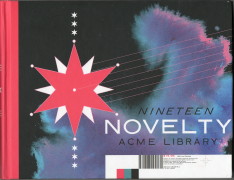
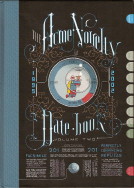
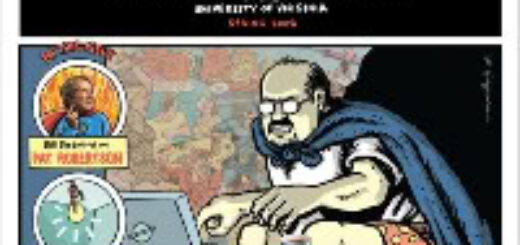
 Comics have long battled against proponents of "serious literature," who have often decried comics as a less intellectual medium than prose.
Comics have long battled against proponents of "serious literature," who have often decried comics as a less intellectual medium than prose. Lemire is in the middle of an impressive thematically-related trilogy of stories about a rural bit of Ontario, Canada – the first book was
Lemire is in the middle of an impressive thematically-related trilogy of stories about a rural bit of Ontario, Canada – the first book was 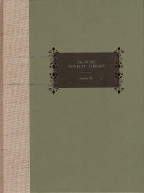
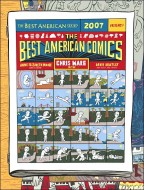 With two years of
With two years of 








